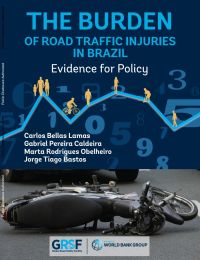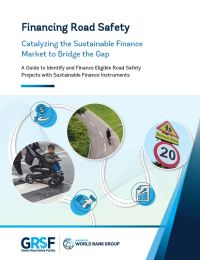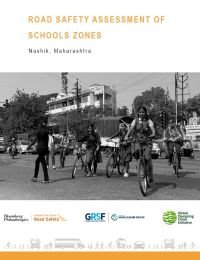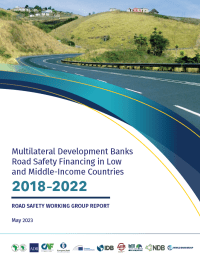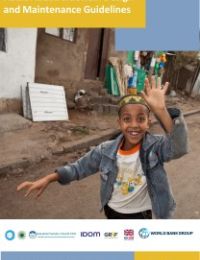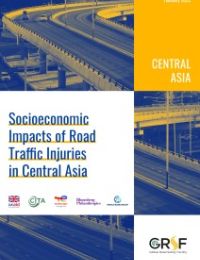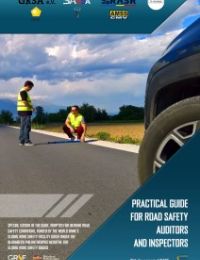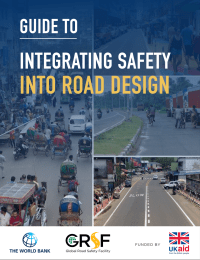Publications
1-10 of 10
-
-
Economics & Finance
Journal Article - The Value of a Statistical Life in the Context of Road Safety: A New Value Transfer Approach
May 2025
-
Economics & Finance
Financing Road Safety: Catalyzing the Sustainable Finance Market to Bridge the Gap
February 2025
-
-
Economics & Finance
Multilateral Development Banks Road Safety Financing in Low and Middle-Income Countries: 2018–2022
May 2023
-
-
-
-
-
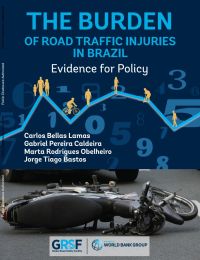
This study evaluates injuries, disabilities, deaths, and associated costs resulting from traffic crashes in Brazil, while suggesting policies to reduce long-term disability and societal impact. In addition to estimating the costs associated with RTIs, the study also addresses factors within the transport system that have an effect on road safety in Brazil, and incorporates these insights into policy recommendations aimed at reversing the cycle of dangerous road crashes.
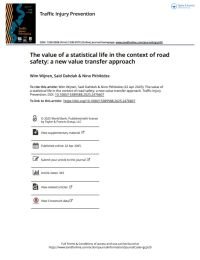
Objective: The value of a statistical life (VSL) is a key input for cost-benefit analysis (CBA) in the context of road safety and for calculations of the socio-economic costs of road crashes. However, many countries, especially low- and middle-income countries (LMIC), lack country-specific VSL estimates. To address this, value transfer is often used, where VSL estimates from other countries are adapted to local situations to estimate the VSL in the countries with no VSL estimates. This paper presents new guidance for VSL value transfer in the context of road safety.
Method: A unit value transfer approach is applied, which implies that a base VSL is determined and used to estimate the VSL in other countries. We collected VSL estimates from 32 countries worldwide to determine base VSLs for both high-income countries (HIC) and LMIC. According to the literature, the VSL is strongly correlated with income per capita. Therefore, income elasticities from the literature are applied to account for the impact of per capita income on the VSL.
Results: The resulting VSL transfer functions are VSL = 0.404*(Y/5,726)1.2 for LMIC and VSL = 3.206*(Y/42,087)0.8 for HIC, where VSL is the VSL in million USD and Y is the Gross National Income per capita (USD, 2020 prices). The VSL ranges from approximately 22,000 USD to 1.1 million USD in LMIC and from 1.2 million USD to 4.8 million USD in HIC.
Conclusions: We recommend applying this VSL transfer approach for cost-benefit analysis and road crash costing in countries lacking appropriate country-specific VSL. Moreover, this study highlights that, despite the growing interest in LMIC in research on VSL, the number of studies in these countries is still limited, emphasizing the need for more VSL studies. Finally, developing transfer functions for non-fatal injuries is recommended, which is an essential input for CBA as well.
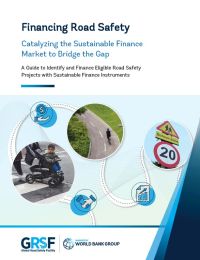
The burden of road traffic injuries is a significant global challenge requiring urgent attention and investment. By integrating road safety investments with broader development goals and leveraging innovative financing solutions such as labeled sustainable bonds and loans, available financing for road safety projects can be dramatically increased.
The societal, economic, and human benefits of improving road safety are extensive, making it a critical priority for national agendas. Through strategic investments in road safety, economic burdens can be mitigated, long-term growth promoted, and a safer, more equitable world created for all.
The multilateral development banks -- together with the Global Road Safety Facility and with strong donor support -- can help countries catalyze the sustainable finance market to fund high-impact and results-oriented road safety projects.
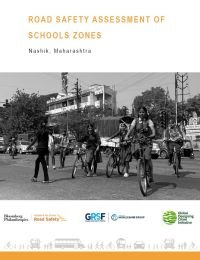
This report spotlights dangerous conditions around school zones in Nashik, Maharashtra, and offers a practical roadmap to protect children during their daily commutes. Developed in partnership with the Nashik Municipal Corporation under the Bloomberg Initiative for Global Road Safety (BIGRS), the report focuses on two schools—Adarsh English Medium School and NMC School 57—where students face serious risks due to poor road infrastructure.
Surveys revealed that while 86% of students at NMC School 57 walk to school, many cite unsafe roads, speeding vehicles, and a lack of footpaths, crossings, and lighting as major concerns. The report recommends a range of interventions: better pedestrian and cycling infrastructure, traffic calming measures, improved signage, and reduced speed limits near schools.
It also calls for establishing School Zone Road Safety Committees to coordinate action and promote awareness. By prioritizing the safety of young pedestrians, this report provides a replicable model for safer school zones in fast-growing cities across India.
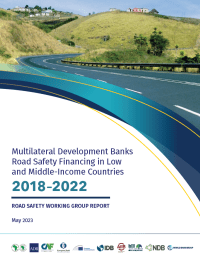
The Multilateral Development Banks (MDBs) Road Safety Working Group, established in 2009, is comprised of ten member institutions that are uniquely positioned to support countries in reaching their considerable and challenging road safety financing needs.
In early 2023, the working group reviewed progress made by the MDBs in financing road safety activities in low and middle-income countries (LMICs), and found that MDBs collectively committed $3.6 billion toward road safety initiatives in developing countries during the period 2018-2022. Three standalone road safety projects—in Bangladesh (World Bank), India (Asian Development Bank and World Bank), and Romania (European Investment Bank)—totaled $912 million in MDBs financing, which is more than one-quarter of the amount committed during this timeframe.
The review is based on details of road and urban mobility project financing provided by seven of the working group's ten members.
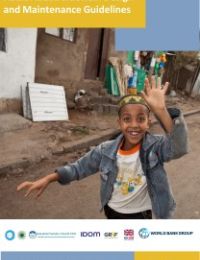
Walking is a predominant mode of travel in Addis Ababa representing more than half of the daily trips. The mild climate in Addis Ababa is conducive for this healthy and green mode of transport. However, sidewalks are often narrow, uneven, obstructed, or non-existent, causing discomfort and road safety risks to the most vulnerable road users: pedestrians. Studies done by the WHO and the Government showed that AA has disproportionately high pedestrian fatalities.
The study on Addis Ababa Sidewalk Safety and Improvement takes the approach of integrating digital technology and Urban Inventory in sidewalk surveys, applies the Global Walkability Index in sidewalk assessments, and adapts the global best practice to the local context. The Addis Ababa Sidewalk Design and Maintenance Guidelines seek to promote the development of quality pedestrian infrastructure and environments, based on the condition’s assessment and global best practices. The design specifications and visual rendering provide recommendations for the policy makers to consider when developing the City’s design and maintenance standards for urban roads, sidewalks, public spaces, and transit-oriented development, some of which are being carried out as part of the technical assistance program of the World-Bank financed Transport Systems Improvement Project (TRANSIP).
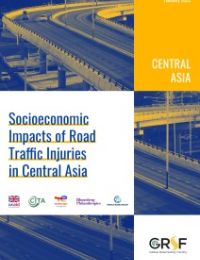
Road traffic injuries (RTIs) are well known to cause enormous human suffering in terms of both morbidity and mortality, and on a global scale. The economic dimension of the disease burden is far less well understood; but it is important to assess the size of the economic burden so that it can be considered when calculating the cost-benefit ratio of policies to tackle this problem. Because it is, in principle, and to some degree, an avoidable one.
This report focuses primarily on assessing various dimensions of the economic consequences of RTIs, as applied specifically to four Central Asian countries (Kazakhstan, Kyrgyzstan, Tajikistan, and Uzbekistan) – a part of the world in which there is still a major need to reduce RTIs.
This study shows that on top of the harm RTIs inflict upon human health, they also impose a considerable financial burden on health care systems. In 2016, the total estimated health costs of RTIs in these four countries was approximately Int$95 million, ranging from Int$2.8million in Tajikistan to Int$49.3 million in Kazakhstan. In Kazakhstan, the overall health costs resulting from RTIs were similar to the cumulative expenditure for rehabilitative and palliative care within the state-guaranteed basic package. The heavy financial burden on health care systems to manage RTIs in these countries adds weight to the urgency to increase preventive efforts by road safety policymakers, and should motivate appropriate organization of the post-crash response by health care system decision makers. The cost estimates discussed in this report indicate the potential for significant economic cost savings if both deaths and injuries from road crashes could be substantially reduced in these countries.

The World Bank estimates a significant funding gap in road safety of 260 billion to achieve SDG 3.6 and 11.2 in the next ten years, and recognizes that this gap cannot be closed through public funding alone and thus mobilization of private capital is required. The impacts of road traffic crashes reach far into the economy and can cost L/MICs as much as 6% of their GDP. The costs of a road traffic crash do not end at the roadside; they create ripple effects throughout the wider economy. Loss of income, property damage, insurance premiums, loss of taxes, and burdens on the health sector are just some of the far-reaching costs associated with road traffic crashes. Road traffic crashes can cost countries as much as 6 percent of their GDP and trap families in poverty as they lose income generating potential and focus on providing lifetime care.
This report examines the potential for private capital mobilization to close this gap. The report investigates the market failure to appropriately account for the cost of road crashes, which prevents private capital from flowing to road safety investments. The growth of socially responsible investing and the sustainable finance market offers a new opportunity to address this market failure. The report proposes different business models and financing instruments to channel private investment into road safety projects. These investment structures consist of subnational, public-private partnerships (PPPs) and corporate investments that can leverage the growing sustainable finance market, including social and sustainability-linked financings (SLFs).
The report also develops indicators that can be used to tie the cost of financing to the attainment of road safety targets, incentivizing borrowers to commit to road safety as part of SLFs. The report examines the enabling environment for structuring investable road safety projects in a sample of countries, looking at the barriers and opportunities, and proposing risks and mitigation strategies, like blended finance mechanisms and stable revenue sources, for long-term sustainability of road safety investments.
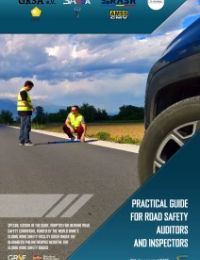
After almost two decades of experience with Road Safety Audit (RSA) Worldwide, this procedure is now recognized as one of the most efficient engineering tools. RSA is a highly efficient and cost-effective engineering tool for improvement of safety on roads. It is much cheaper to identify road safety deficiencies in the process of design than later after construction is completed. RSAs are among the most cost-effective investments a Road Authority can undertake.
With its EU Directive No. 2008/96 and amendment 2019/1936 on road infrastructure safety management, the European Union (EU) made a clear decision that RSA will be mandatory for the Trans-European Road Network (TERN) and main roads. This Directive contains another tool called Road Safety Inspection (RSI) on safety deficiencies of existing roads. The RSI is very similar to the process of Road Safety Audit in the pre-opening phase of newly constructed roads. RSIs are essential for the redesign and upgrading of existing roads, and these are done in many countries to give the designers insights and direction for safety improvements. Given that, the purpose of this practical guide is to provide practical guidance to those doing RSAs and RSIs, the examples of typical design deficiencies shown should be useful to both road safety inspectors and road safety auditors.
This document draws on the more comprehensive guidelines and manuals on Safety engineering mentioned in the acknowledgements but deliberately focuses only on these issues of direct relevance to road safety auditors/inspectors and to the road safety reports that they must prepare, including of recommendations for improvements.
This is a special edition of the guide, adapted for Ukraine road safety conditions and legislation, funded by the World Bank‘s Global Road Safety Facility (GRSF) under the Bloomberg Philanthropies Initiative for Global Road Safety (BIGRS).
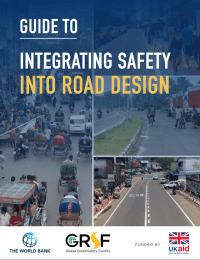
This guide focuses on elements of safe road and roadside designs for road networks that can provide safe mobility to all road users
A substantial reduction in road deaths will only be feasible if concerted efforts are made, following the “Safe System” approach involving all elements of road safety, management, and delivery. This includes all pillars of the Safe System—starting from road safety management, safe roads and roadsides, safe speed, safe vehicles, safe road users, and post-crash care. This guide focuses on elements of safe road and roadside designs for road networks that can provide safe mobility to all road users, as well as complementary changes to improve speeds, vehicle safety, road user behaviors, and post-crash care. A balanced road design must take into account these complementary system elements to maximize safety benefits. The energy carried by a moving object is proportional to the square of its speed. A well-designed “forgiving roadside” ensures that this energy is dispersed in a crash, and as a result, less energy is transferred to the occupants.
Road infrastructure design plays a vital role in road safety outcomes. Safe infrastructure supports other road safety pillars by encouraging appropriate road user behavior (such as appropriate speed and correct lane position) and by providing a forgiving road environment if things go wrong. Poorly designed road infrastructure can give rise to dangerous road user behavior. One of the key realizations of the Safe System approach is that drivers make mistakes and will continue to do so, even if we can reduce how often these occur. This road user error has long been recognized as a significant contributor to poor road safety outcomes. However, roads of any given speed can be designed to reduce the likelihood of crashes occurring, and there is very clear evidence that the severity of outcomes when crashes do occur is significantly influenced by the road design. Even if a crash still occurs, improved road infrastructure can save many lives and prevent debilitating injuries.
The Safe System approach highlights that a shared response is required to address road safety. This means that road users will continue to take responsibility for their actions, for instance by being alert and compliant with road rules. However, it is also recognized that road managers and designers have a significant responsibility to provide a road system that protects all road users. This can be achieved through appropriate designs of roads.

